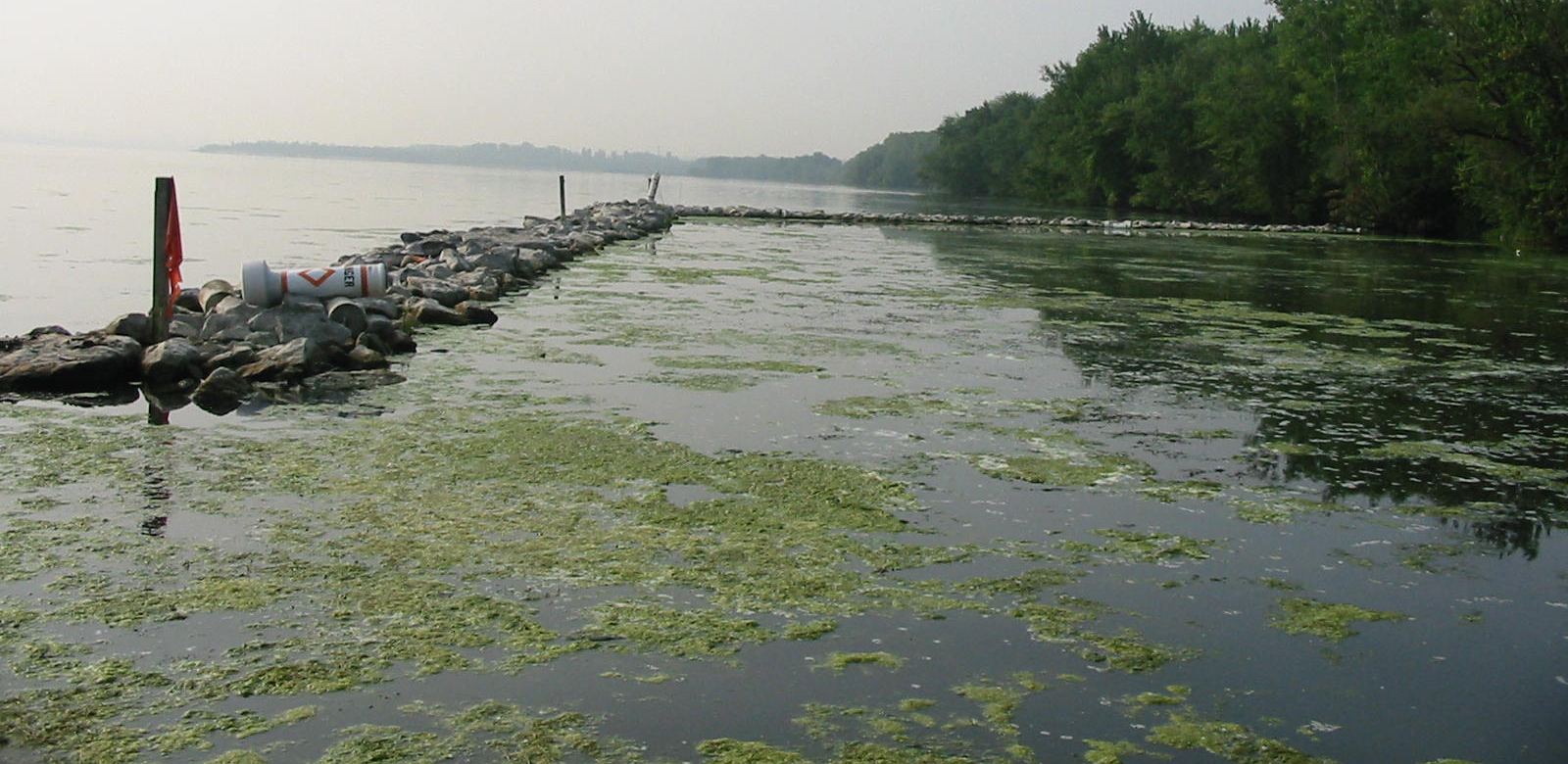GRI Scientist Participates in Restoration of the Most Polluted US Lake - Onondaga Lake
March 28, 2005 Since 1990, Dr. John Madsen has been involved in clean-up efforts for the most polluted lake in America - New York's Lake Onondaga. A century's worth of waste has been dumped into Lake Onondaga and a group of scientists from State University of New York, Syracuse University, Mississippi State University and other organizations such as the Upstate Freshwater Institute have been studying the littoral zone of the lake for a number of years.
Since 1990, Dr. John Madsen has been involved in clean-up efforts for the most polluted lake in America - New York's Lake Onondaga. A century's worth of waste has been dumped into Lake Onondaga and a group of scientists from State University of New York, Syracuse University, Mississippi State University and other organizations such as the Upstate Freshwater Institute have been studying the littoral zone of the lake for a number of years.The littoral zone occurs in lakes near the shore where light penetrates the water column with sufficient intensity to allow aquatic plants to grow. In a healthy lake, this zone is highly productive with diverse aquatic vegetation, and provides habitat for spawning and early life stages of many fish species.
The Onondaga Lake littoral zone has been severely impacted historically by a combination of factors, including nutrient pollution, industrial chemical waste, and severely degraded habitat. Major signs of habitat degradation in Onondaga Lake have included a somewhat featureless shoreline for shelter from wave action, few wetlands for fish spawning and nursery areas, a predominance of light-weight oncolites (a by-product of historical industrial pollution) on the lake bottom, and, as recently as 10 years ago, few rooted, vascular aquatic plants along the shoreline. Adequate structural habitat in the littoral zone is critically important for survival and successful reproduction and recruitment of many fish species.
 The Onondaga Lake Partnership has sponsored construction of a permanent wave break constructed of stone (dubbed the Permanent Habitat Module (PHM)) as a test to determine whether a series of PHMs should be constructed to enhance littoral zone habitat throughout the lake. The team of scientists is gathering data on the slow progression of changes in the plant, invertebrate, fish, reptile, and amphibian populations, as well as sediment and water quality and chemistry near the PHM compared to other partial wave break sites and reference sites on the west shore of the lake.
The Onondaga Lake Partnership has sponsored construction of a permanent wave break constructed of stone (dubbed the Permanent Habitat Module (PHM)) as a test to determine whether a series of PHMs should be constructed to enhance littoral zone habitat throughout the lake. The team of scientists is gathering data on the slow progression of changes in the plant, invertebrate, fish, reptile, and amphibian populations, as well as sediment and water quality and chemistry near the PHM compared to other partial wave break sites and reference sites on the west shore of the lake.Onondaga Lake's biggest industrial polluters may have to spend up to $2.3 billion over 17 years to clean up waste it has dumped into the lake according to a report from the New York Department of Environmental Conservation. The state of New York claims that 165,000 pounds of Mercury was dumped by one industry alone from 1946 until 1970. The Mercury contamination led to Lake Onondaga being on the federal Superfund list of toxic waste sites.
For more info on the Lake Onondaga clean-up project, contact Dr. John Madsen at jmadsen@gri.msstate.edu.
